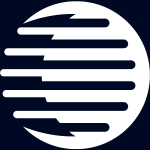Nasolabial fold fillers have become a key solution in cosmetic dermatology for reducing the appearance of nasolabial folds, also known as smile lines or laugh lines. These folds, running from the sides of the nose to the corners of the mouth, often deepen with age. Injectable fillers offer a minimally invasive option for those seeking to soften these lines and rejuvenate their facial appearance. This comprehensive article will explore nasolabial fold fillers, including their types, benefits, the procedure, potential risks, and aftercare.
Introduction to Nasolabial Fold Fillers
Nasolabial fold fillers are injectable treatments designed to add volume and smooth out the deep creases that form between the nose and mouth. They are a popular choice for individuals looking to achieve a more youthful facial appearance without undergoing surgery.
Types of Nasolabial Fold Fillers
- Hyaluronic Acid (HA) Fillers: HA fillers like Juvederm, Restylane, and Teosyal are commonly used for their safety and natural-looking results.
- Calcium Hydroxylapatite (CaHA) Fillers: Radiesse is another option, known for providing structure and stimulating natural collagen production.
- Poly-L-lactic Acid Fillers: Sculptra works gradually to stimulate the body’s own collagen production, offering long-lasting results.
Benefits of Nasolabial Fold Fillers
- Immediate Improvement: Fillers provide instant results, with the full effect visible within a few days.
- Minimally Invasive: Unlike surgical options, dermal fillers involve minimal downtime and discomfort.
- Customizable: The amount and type of filler used can be tailored to each individual’s needs.
- Temporary and Adjustable: Most fillers are reversible, and their effects typically last from several months to a year or more, depending on the type used.
The Procedure
- Consultation: A thorough assessment by a qualified practitioner to determine the best treatment approach.
- Preparation: The area is cleaned, and a topical anesthetic may be applied.
- Injection: The filler is injected into and around the nasolabial folds.
- Duration: The procedure typically takes about 30 minutes to an hour.
Potential Risks and Side Effects
- Bruising and Swelling: Common side effects that usually subside within a few days.
- Asymmetry or Lumpiness: Can occur if the filler is not evenly distributed.
- Infection: A rare complication that can occur with any injectable treatment.
- Allergic Reactions: Very rare, especially with HA fillers, but still a possibility.
Aftercare and Maintenance
- Avoiding Strenuous Activities: Recommended for a short period post-treatment.
- Cold Compresses: Can be used to reduce swelling.
- Follow-Up Treatments: Maintenance sessions may be required to preserve the desired effects.
Choosing the Right Practitioner
Selecting an experienced practitioner with an in-depth understanding of facial anatomy is crucial. This ensures the safety and effectiveness of the treatment, as well as achieving natural-looking results.
Conclusion
Nasolabial fold fillers offer a practical and effective solution for softening smile lines and rejuvenating the lower face. While they provide a less invasive alternative to surgery, understanding the procedure, potential risks, and aftercare is vital. Consultation with a qualified cosmetic practitioner is essential to determine if this treatment is suitable and to ensure optimal outcomes.
Further Reading and Consultation
For those considering nasolabial fold filler treatment, it is advisable to seek further information from reputable medical sources, peer-reviewed journals, and consultations with board-certified dermatologists or plastic surgeons. These resources can provide more in-depth insights into the latest techniques and advancements in facial fillers.

